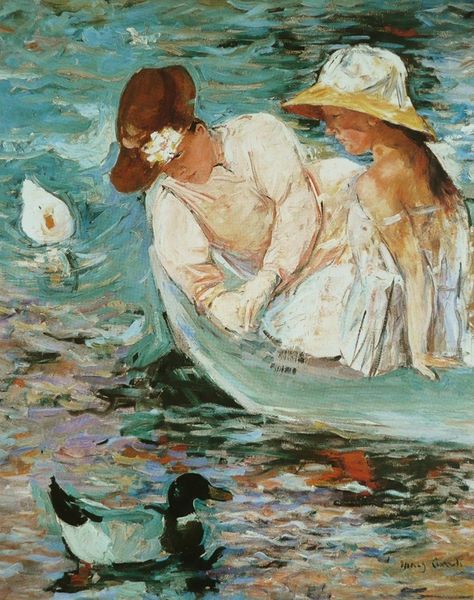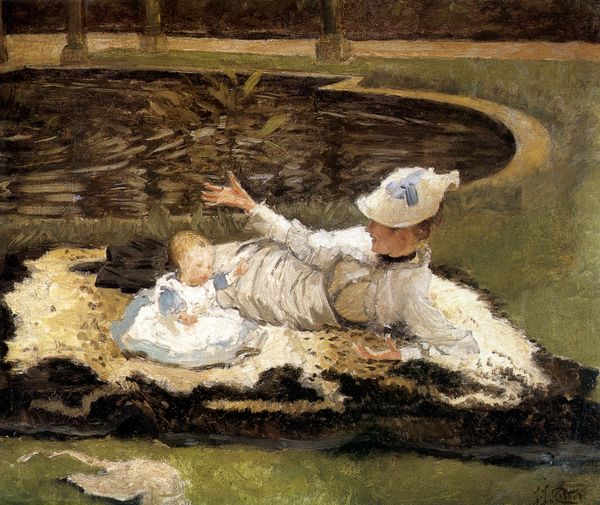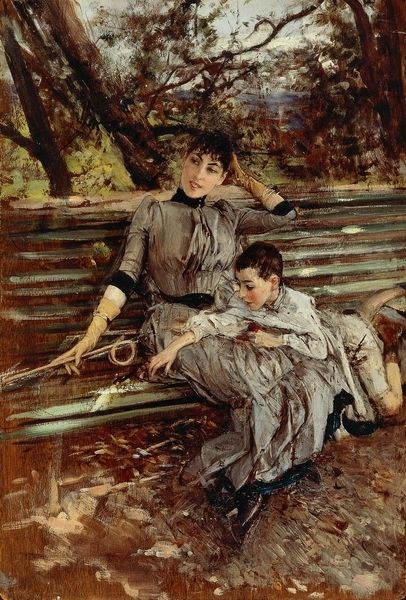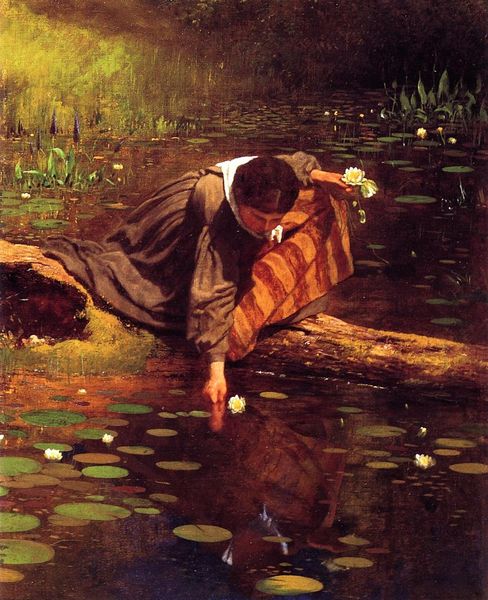
Dimensions: 53.34 x 38.74 cm
Copyright: Public domain
Editor: Here we have Jessie Willcox Smith's "The Lily Pool," painted in 1903. It appears to be an oil or watercolor piece depicting two children at the edge of a circular pond. There's something very dreamlike about it, almost as if viewed through a soft filter. What visual elements stand out to you? Curator: The composition employs a compelling balance. The strong horizontal line of the pond's edge is countered by the verticality of the trees in the background. Notice how the artist directs our gaze downward into the circular form of the pond, encouraging an inspection of the surface. Do you see how the light is treated? Editor: Yes, the way light dances on the water and reflects on the children is quite remarkable. It emphasizes the textural differences between water, skin, and clothing. The pond almost becomes a mirror of youthful contemplation. Curator: Precisely. Consider the placement of the figures. They aren't fully integrated into the background but exist within a defined plane. It’s a separation that encourages the viewer to examine the relational tension within the frame and ask, what are these children looking at, why only their backs to us? Notice too the chromatic scale; Smith favors tertiary hues to create a tonal accord between surface and subject, generating what we can agree to be a serene mood. Editor: It is serene. I see your point. There is so much attention to composition and light. The soft textures, especially, seem crucial to creating this tranquility. Curator: And did you observe that though classified as Impressionist, Smith presents more structured figuration than many works of that era? Editor: That’s a good clarification. I focused on color but initially missed other crucial compositional elements. Thank you. Curator: And thank you, your reading is sensitive and insightful.
Comments
No comments
Be the first to comment and join the conversation on the ultimate creative platform.













